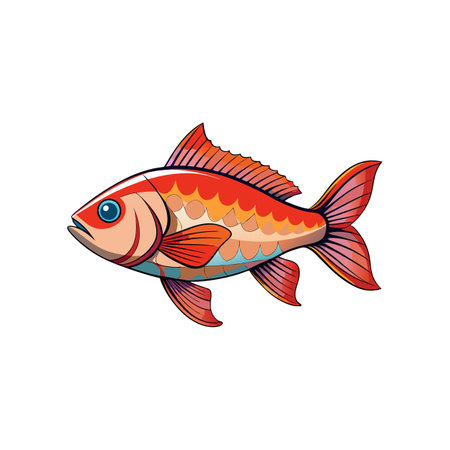Understanding Water Clarity and Flow
When it comes to fishing across America’s diverse waterways, understanding the differences in water clarity and flow is crucial for every angler. Whether you’re casting in a stained bayou, a crystal-clear mountain stream, or a fast-moving river in the Midwest, each environment presents unique challenges that directly impact your fishing line choice. Stained waters, often murky from sediment or algae, can hide lines more easily but also mask subtle bites. Clear waters, like those found in spring-fed creeks or deep lakes, require stealthier approaches since fish can spot unnatural lines with ease. Fast-moving waters add another layer of complexity—strong currents not only challenge your presentation but demand lines that balance invisibility with toughness. Recognizing these variables isn’t just about technical know-how—it’s about adapting to the ever-changing American outdoors so you can make smart, tactical decisions every time you hit the water.
2. Fishing Line Basics: Types and Properties
Before you can match your fishing line to water conditions, its important to understand the three main types of fishing lines—monofilament, fluorocarbon, and braided—and how their unique features influence performance in different environments. Each line brings something special to the table, from stretch and visibility to strength and sensitivity. Heres a practical breakdown:
| Line Type | Key Properties | Best For Water Conditions |
|---|---|---|
| Monofilament | Stretchy, floats, moderate abrasion resistance, more visible underwater, easy to handle and knot | Stained or murky water (less visibility), slower-moving waters where shock absorption is needed |
| Fluorocarbon | Low visibility underwater, sinks quickly, high abrasion resistance, less stretch than mono | Clear water (stealth is key), rocky or heavily structured areas, when finesse presentations matter |
| Braided | No stretch, super strong for diameter, highly visible in water, excellent sensitivity but poor abrasion resistance compared to fluoro | Fast-moving or heavy cover waters (cutting through vegetation), stained or muddy water where visibility isn’t a big issue |
Understanding these basics helps you make smarter choices based on what the water is throwing at you. Whether you’re threading through clear creeks or battling debris-choked rivers after a rainstorm, picking the right line type sets you up for success and fewer break-offs.
![]()
3. Fishing in Stained Water: Best Line Choices
When you’re fishing in stained or murky water—like the kind that shows up in many American rivers and lakes after a solid rainstorm—your line choice can make or break your day on the water. Visibility, abrasion resistance, and forgiveness are top priorities here.
Tips on Visibility
In stained water, fish have a tougher time spotting your line, which works to your advantage. You don’t have to worry as much about using ultra-invisible lines. Opt for high-visibility braided lines if you want to keep track of your bait’s movement, or go with green or brown lines that blend in well with the muddy surroundings.
Abrasion Resistance Matters
Murkier water often means more debris—branches, rocks, and other underwater obstacles stirred up by flowing currents. Choose lines known for their abrasion resistance. Braided lines and heavy-duty monofilament are both solid picks for withstanding rough conditions without snapping when you hook into a lunker.
The Most Forgiving Lines
Stained water isn’t just hard on visibility; it can also be unpredictable for hooksets. Monofilament is especially forgiving here thanks to its stretch, helping absorb sudden shocks from aggressive fish. If you’re fishing around heavy cover, consider a fluorocarbon leader to add stealth and extra durability against nicks.
Quick Tips for Stained Water Success
- Use 15-30 lb test braided line for strength and visibility control.
- Add a short fluorocarbon leader (12-20 lb) if fish seem line-shy.
- Stick to green, brown, or camouflage colors to match murky water tones.
Bottom Line
In stained water conditions common across the U.S., prioritize toughness over invisibility. Braided lines offer visibility and resilience, while mono gives you forgiveness when the fight gets wild. Match your line color and strength to the environment for the best shot at landing fish when the waters run dirty.
4. Tackling Clear Water: Low-Visibility Strategies
Fishing in gin-clear lakes and streams is a true test of stealth and finesse. In these conditions, fish can easily spot unnatural elements, including your line, lure, or even shadows cast on the water. To maximize your chances of success, its essential to choose the right fishing line and presentation tactics that minimize your visibility and avoid spooking wary fish.
Choosing the Right Line for Clear Water
The biggest challenge in clear water is making your setup as invisible as possible. Heres a comparison of popular line types and their visibility under crystal-clear conditions:
| Line Type | Visibility in Clear Water | Recommended Use |
|---|---|---|
| Monofilament (Clear) | Low to Moderate | Budget-friendly; good for beginners but not the most invisible option. |
| Fluorocarbon | Very Low | Best choice for stealth; nearly invisible underwater due to similar light refraction as water. |
| Braided Line (Hi-Vis) | High | Avoid unless using a long fluorocarbon leader. |
| Braided Line (Low-Vis Green/Camouflage) | Moderate | Only with a fluorocarbon leader; mainline still visible in ultra-clear water. |
Stealth Techniques Beyond the Line Choice
Selecting a low-visibility line is just step one. Here are additional tactics that American anglers swear by when targeting skittish fish in pristine waters:
- Use Longer Leaders: Attach a longer fluorocarbon leader (18-36 inches) to keep the visible mainline away from the bait zone.
- Downsize Everything: Opt for lighter pound-test lines, smaller hooks, and compact lures to match the subtlety of your line.
- Casting From a Distance: Stay well back from the shoreline or boat edge and make longer casts to avoid casting shadows or vibrations onto the target area.
- Smooth Presentations: Let your bait drift naturally with minimal rod movement. Avoid splashy casts or aggressive twitches that can alert fish.
- Avoid Unnecessary Movement: Wear muted clothing, keep gear organized, and move slowly along banks or in boats to reduce disturbance.
The Importance of Subtle Presentation Tactics
A subtle presentation can make all the difference in clear water. Try these proven strategies:
- Naturally Colored Baits: Match local forage colors—think shad grays, crawfish browns, or translucent worms.
- Suspend Your Lure: Use weightless rigs, slow-sinking plastics, or suspending jerkbaits for an unhurried approach that looks more realistic to cautious fish.
- Sensitive Gear: Lighter rods and reels help you detect gentle bites common when fish are extra wary.
Key Takeaway: Blend In and Be Patient
If you want to land more fish in America’s clearest lakes and streams, it’s all about blending into the environment and letting your line—and your actions—disappear into the background. Choose fluorocarbon whenever possible, keep presentations subtle, and remember: patience pays off when it comes to fooling educated fish in ultra-clear water.
5. Fast-Moving Water Challenges
Fishing in fast-moving American rivers is a true test of both angler skill and gear selection. When you’re dealing with strong currents, your fishing line choice becomes critical to success. The speed and power of the water can put extra strain on your setup, making line strength, stretch, and durability more important than ever. Here’s how current speed impacts your line decisions and some field-tested tips for maximizing hook sets in rugged river conditions.
Current Speed: Why Line Matters
Fast currents increase water resistance against your line, causing it to bow or drag. This can reduce sensitivity, making it harder to detect bites and set hooks effectively. In these situations, opt for a line with higher pound-test rating to stand up to the abrasive rocks, debris, and sheer force of moving water. Braided lines excel here—they have minimal stretch, cut through current better, and provide superior strength-to-diameter ratio.
Stretch: Friend or Foe?
Monofilament lines are known for their stretch, which can act as a shock absorber when fighting big fish in powerful water. However, too much stretch can dull your hook sets and make it difficult to drive the hook home quickly—especially if you’re casting long distances or using heavy rigs. Fluorocarbon offers less stretch than mono but more abrasion resistance than braid, striking a balance for certain river scenarios.
Pro Tips for Rugged American Rivers
If you want maximum control and solid hook penetration in fast-moving waters:
- Choose braided line (20-30 lb test) for spinning or baitcasting reels where structure is heavy.
- Add a fluorocarbon leader (12-15 lb test) to boost invisibility and abrasion resistance near rocks.
- Keep line tight at all times—slack allows current to move your bait unnaturally and can result in missed strikes.
- Use shorter rods (6’6”–7’) for better leverage and quicker hook sets in tight quarters.
Fast water fishing is all about adapting to dynamic conditions. The right fishing line helps you stay connected to both lure and fish—even when the river tries its best to break you off.
6. Practical Examples and Regional Considerations
Understanding how water conditions impact your fishing line choice is essential, but putting that knowledge into practice at real U.S. fishing destinations can make all the difference. Here are some practical examples and regional tips to help you adapt your tackle for success:
Florida Everglades: Stained, Slow-Moving Water
The Everglades are famous for their tannin-stained, slow-moving waters teeming with largemouth bass and peacock bass. In these murky conditions, visibility is low, so fluorocarbon’s invisibility isn’t as important. Anglers here often choose heavier braided line—like 30-50 lb test—for its strength in thick vegetation and ability to cut through lily pads, pairing it with a short mono or fluoro leader just for abrasion resistance.
Pro Tip:
Go heavy on braid when flipping or pitching into dense cover, but add a leader if fish are pressured or the water clears up after rainfall.
Great Lakes Region: Clear, Open Water
Lakes like Lake Michigan and Lake Erie have crystal-clear waters where smallmouth bass and walleye can get line-shy. Here, finesse is key. Most local anglers downsize to 6-10 lb test fluorocarbon mainline or leader to keep presentations stealthy. This approach helps fool finicky fish under high visibility conditions.
Pro Tip:
If wind picks up or you’re trolling deep for walleye, consider using a thin-diameter braid as your mainline with a long fluorocarbon leader to maintain sensitivity and stealth.
Pacific Northwest Rivers: Fast-Moving Water
The Columbia River and its tributaries are known for fast currents and powerful salmonids like steelhead and Chinook salmon. In these swift waters, abrasion resistance matters most. Locals rely on strong monofilament (12-20 lb) or abrasion-resistant copolymer lines to withstand rocks and debris.
Pro Tip:
When drift fishing or using plugs in fast water, keep leaders short and stout. If water clarity improves during late summer, switch to clear mono or fluorocarbon leaders to avoid spooking fish.
Texas Reservoirs: Mixed Clarity & Structure
Lakes such as Lake Fork vary from muddy creek arms to gin-clear main channels depending on weather and season. Savvy Texas anglers carry both braid (for stained, weedy areas) and fluorocarbon (for clearer open water) in their tackle bags to swap out as needed.
Adapt Like a Local:
Check recent water reports before hitting the lake. After storms muddy up the coves, switch to braid for power; when targeting deep structure in clearer areas, tie on fluorocarbon for subtle presentations.
No matter where you fish across the U.S., tuning your line choice to match local water conditions gives you an edge—just like the locals do. Observe, adapt, and don’t be afraid to experiment with your setup every time you hit the water.
7. Quick Reference: Choosing the Right Line for Any Situation
If you want to make smart line choices before hitting the water, use this straightforward chart and keep these quick tips in mind. Matching your fishing line to water conditions can be the difference between a trophy catch and going home empty-handed.
Handy Fishing Line Selection Chart
| Water Condition | Recommended Line Type | Pound Test | Key Tips |
|---|---|---|---|
| Stained/Murky | Braided or Monofilament (Darker colors) | 10-20 lb for bass/trout 20+ lb for catfish/pike |
Braid cuts through debris; mono offers forgiveness and is less visible in stained water |
| Clear/Still | Fluorocarbon (Low-vis, clear) | 6-12 lb for finesse fishing 12-17 lb for larger species |
Fluoro vanishes underwater; go lighter for spooky fish like bass or trout |
| Fast Moving/Current | Braided (High strength, low stretch) | 15-30 lb depending on target species and cover | Braid provides sensitivity and control; use heavier test to handle snags and strong currents |
Final Pointers Before You Head Out
- If in doubt, bring a couple of spools: one braid and one fluorocarbon leader.
- Match your line color to water clarity—dark green or mossy for stained, clear for crystal waters.
- Check your line often; rough rocks and heavy cover can fray even the toughest lines.
Your Go-To Strategy:
When you’re standing at the water’s edge, remember: murky means strong but stealthy, clear demands invisible finesse, and fast-moving calls for tough, no-stretch performance. Use this chart as your cheat sheet so you spend less time guessing—and more time catching fish.


